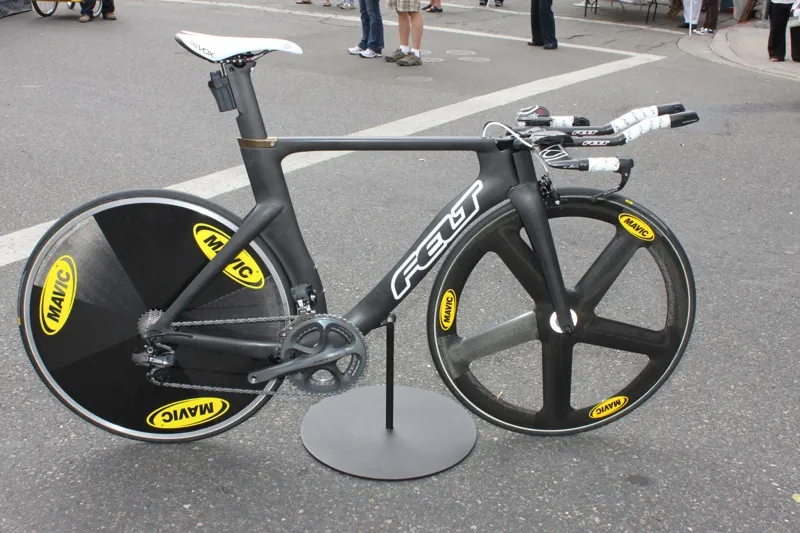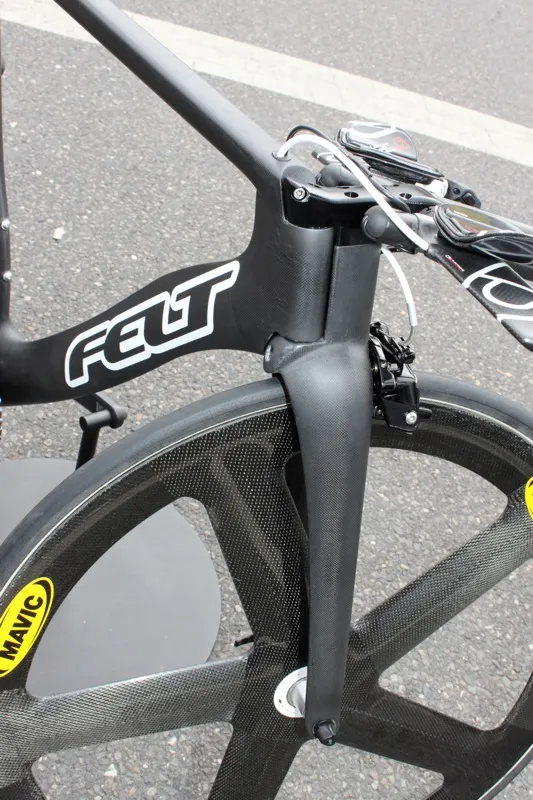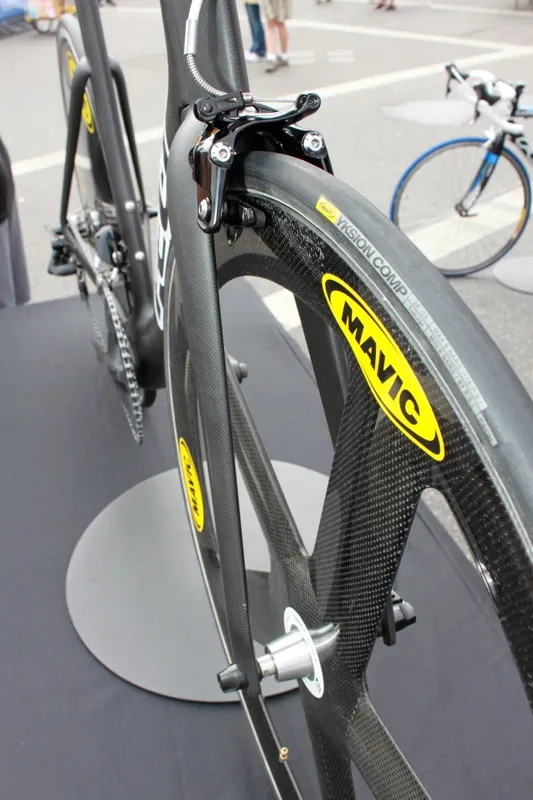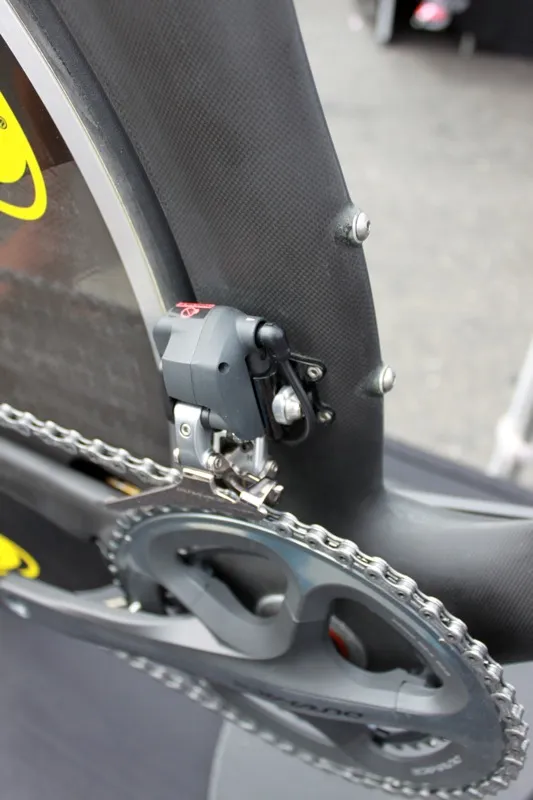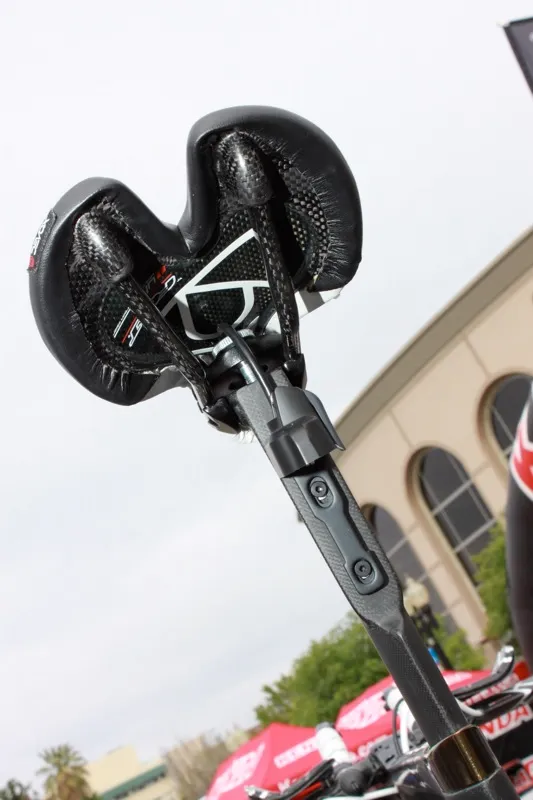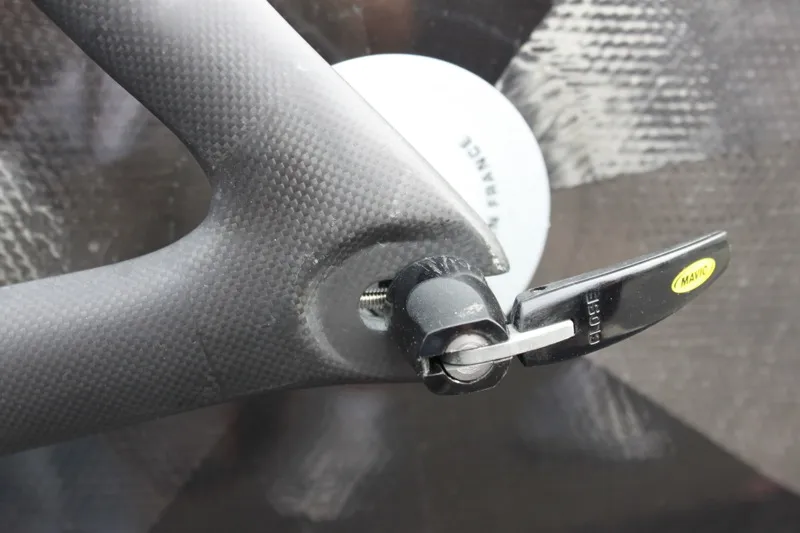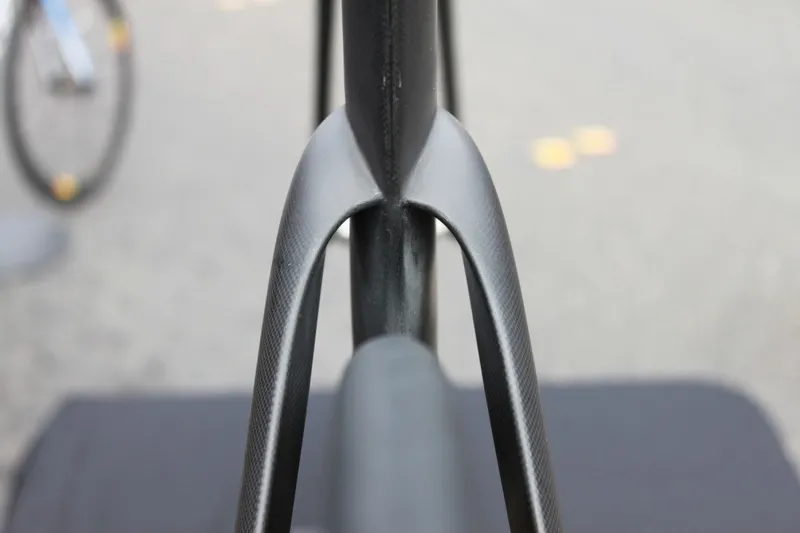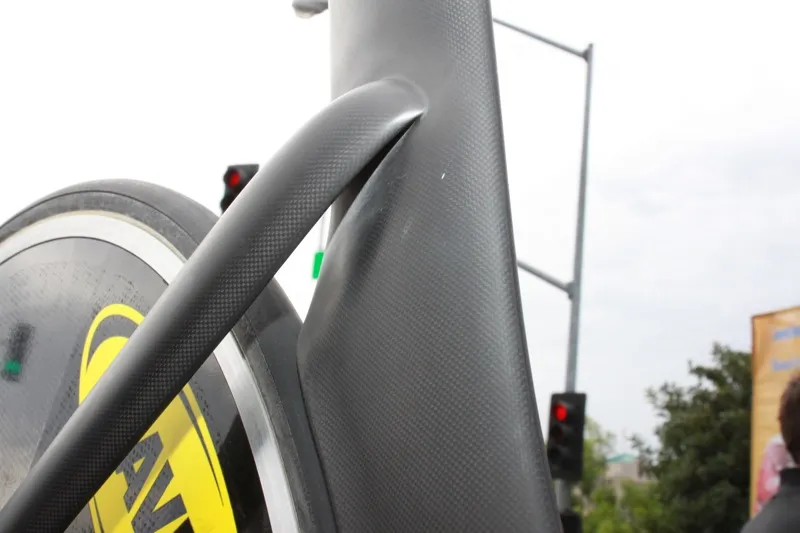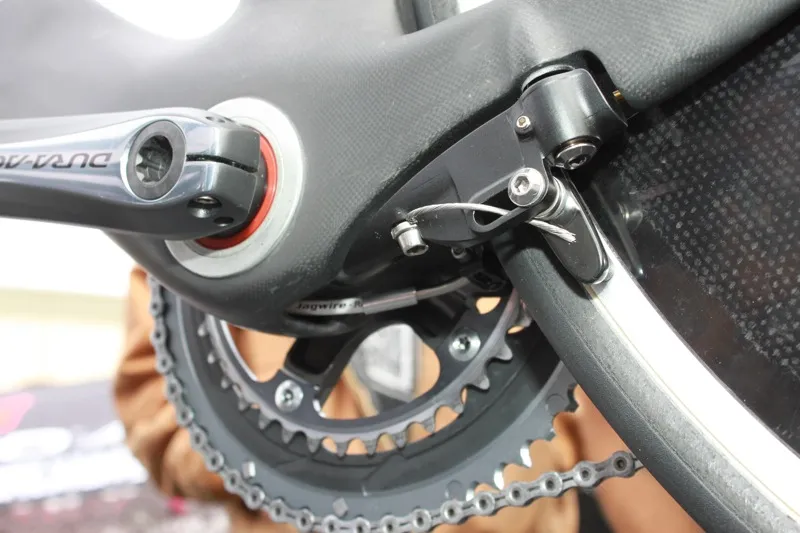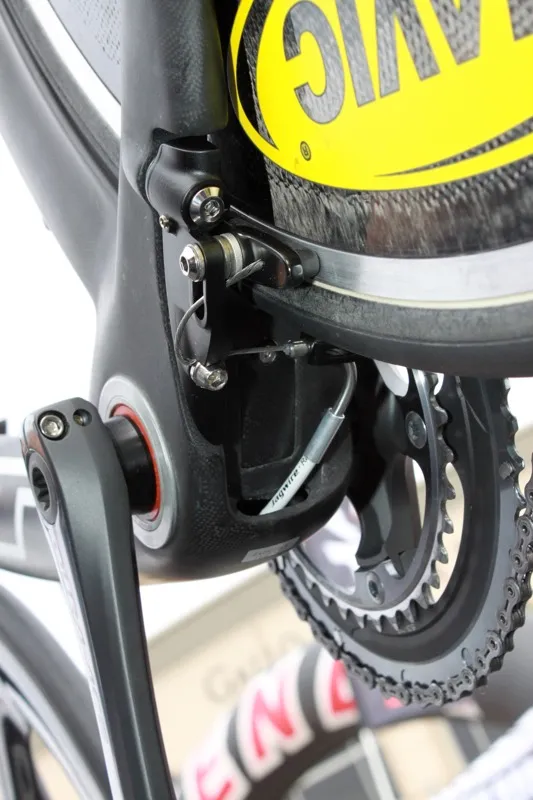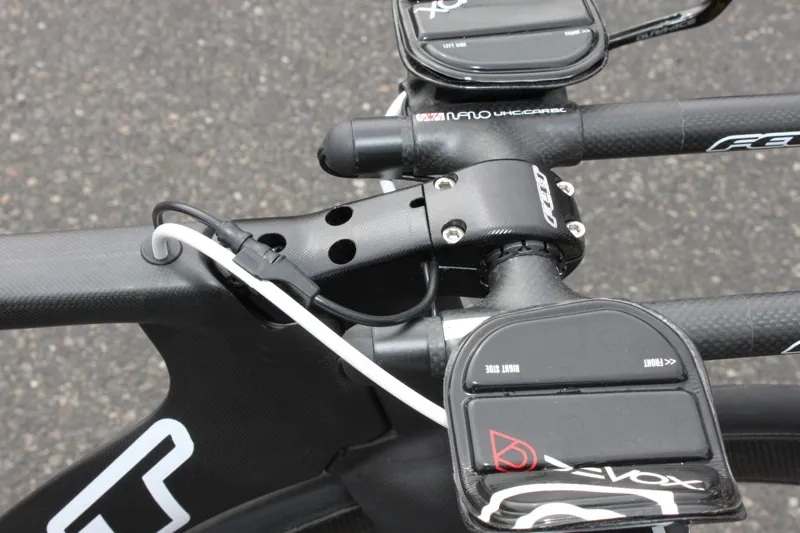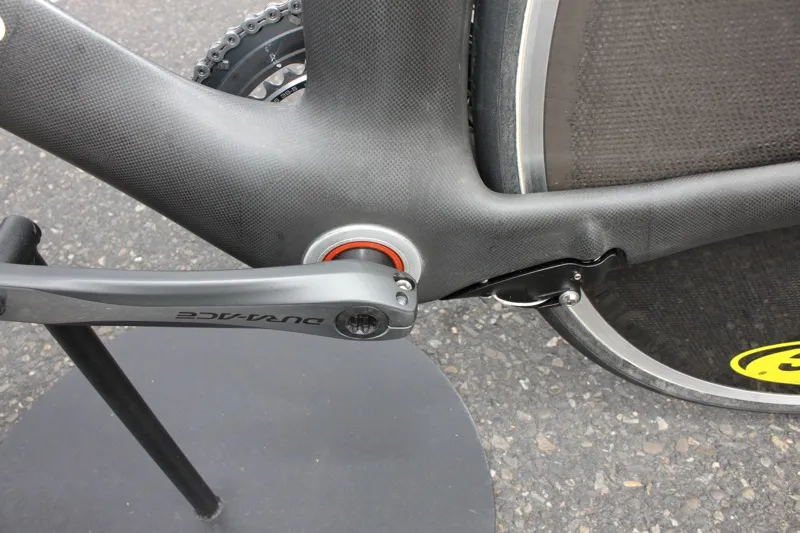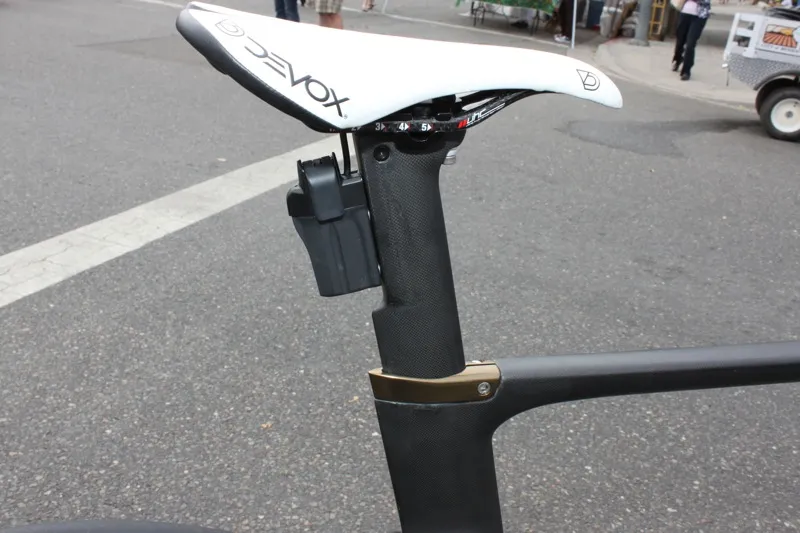If Garmin-Transitions rider Dave Zabriskie is able to regain the outright after Saturday's Tour of California individual time trial, it will be in part to his new 2011 Felt DA time trial bike. The bike is said to be 14 percent faster aerodynamically and 13 percent stiffer than the current version.
Apart from the reduced drag and increased stiffness, Felt have also managed to keep the bike's weight down. The new frame has 25 percent more surface area than the current version, but it's only 2 percent heavier.
Designing the new DA
Though the name is old, the new DA is the culmination of a two-year development cycle, which started with months of computer modelling and prototyping. According to Felt the new DA wouldn't have been possible without today's computing power, specifically CD-adapco's BoxCluster 16-processor computer.
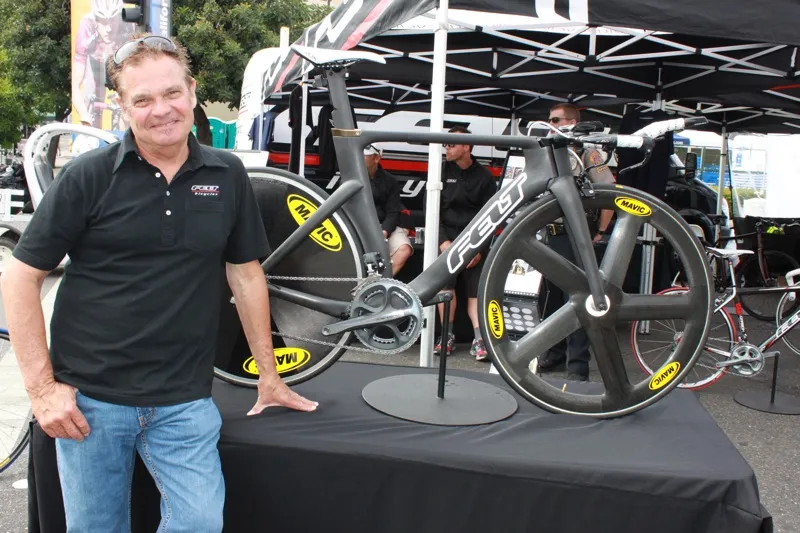
Jim Felt with his new DA
"About 90-percent of our development is in the CAD system or CFD," said Jim Felt, the brand's namesake and design director on the 2011 DA project. "Basically this thing was put together piece by piece in the CFD program, which we've calibrated to the San Diego wind tunnel. Because it's so close for us, it's easy to jump down there to validate something. You always have to validate what you've learned to make sure you're getting what the software says you're getting."
CD-adapco is well known in aerospace, Formula One and among the world's largest auto manufacturers for its Computational Fluid Dynamic CFD computer modelling prior to actual prototype testing. The processors mathematically model complicated aerodynamic simulation tests without the use of a wind tunnel or even having an actual part in hand. The analysis can test different airfoil sections, tube shapes, and even the interactions between the frame and its wheels or rider.
Felt let the CFD data steer the development and shape what the new DA looks like. The software was used to determine the shape of each part of the bike, according to the engineers who worked on the project.
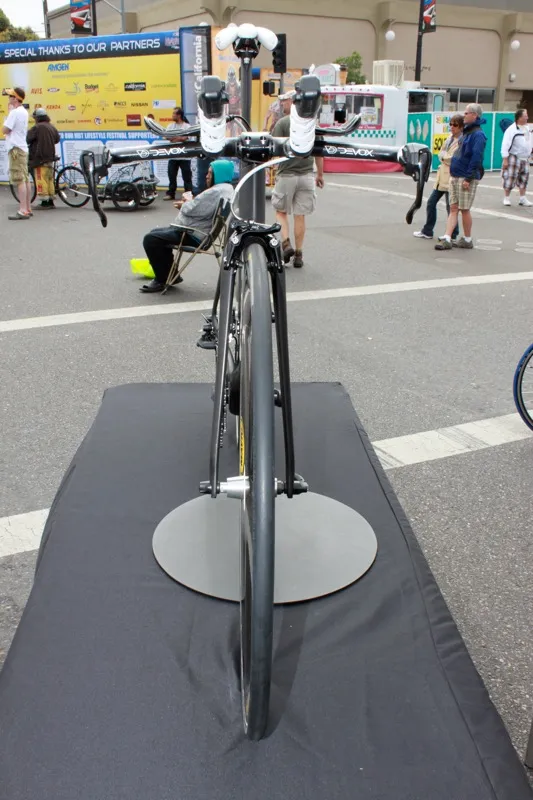
The new Felt DA 1 is narrow: its headtube alone is 7mm narrower through the use a smaller 3/4in bearing
The DA's new design allows it to excel aerodynamically at yaw (wind) angles of 5- to 15-degrees.
"The range of 10 to 15, is what most in the industry consider to be "real world" conditions," said Ty Buckenberger, Felt's lead engineer on the project. "Over the entire range, the new bike is roughly 10 percent faster."
Felt calls out four key engineered aerodynamic details that make this version faster.
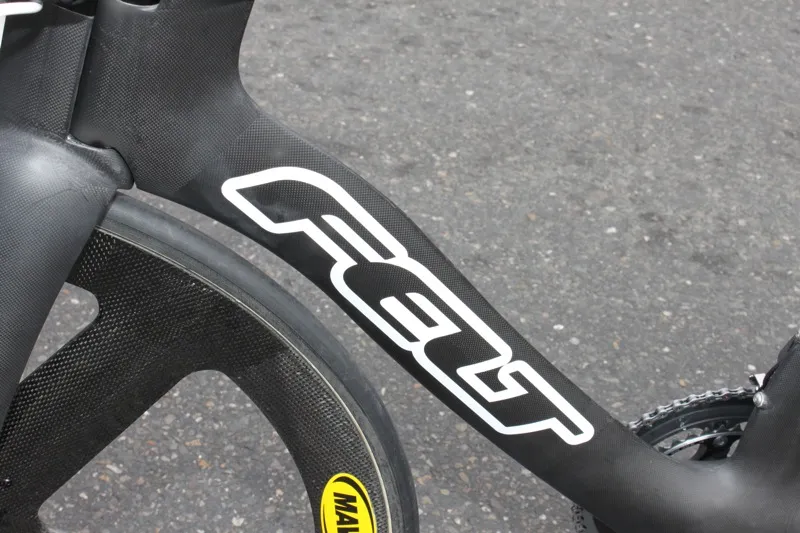
The Lazy S downtube
The first is the ‘Lazy S' downtube, which is said to be faster than the previous cutout design. The new Bayonet 3 steering system is functionally similar to the previous, except considerably narrower in its connection to the frame. It uses a 3/4in bearing down from the old model's 1in bearing. This brings the overall width of the headtube down from 42mm to 35mm.
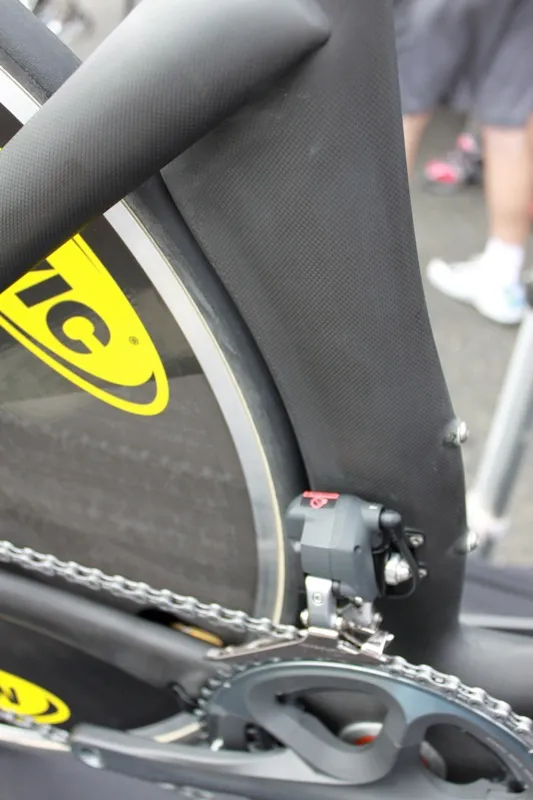
The seat tube kicks at its edge to push air out before it hits the rear wheel
The new seat tube uses a similar design as the downtube in that it eschews a cutout for an airfoil shape with a unique flair right before it meets the tyre, which is meant to kick the air out around the rear wheel.
"We built this bike around the [Zipp] Sub 9 and 808 and in the meantime the [Garmin-Transitions] team went the end of last year and signed a Mavic deal," said Felt. "We had tested Mavic wheels in the past and they sucked at the time and now Mavic has stepped up development and I think they're going to use the wheels at the Tour de France.
"In the meantime there are things that we found with this bike, especially the trips on the seat tube so that there is no change with the rear wheels - it's a wash. Zipp was no better any longer. It's less sensitive to a wheel change."
Proof of concept
The final phase of development was actual wind tunnel testing. In January 2009, Felt's engineering team went to the San Diego Low Speed Wind Tunnel to prove the concepts developed with the CFD data. It used a prototype version of the new DA design. Felt continued to make modifications, five prototypes in all, over the next year until a final version of the bike settled on. This is the bike that Garmin-Transitions introduced in April at the Tour of Romandie, is racing here in California and will use to take on the 2010 grand tours.
The final and most important proof of concept came from Switzerland, according to Felt.
"We have approval, right now, with the UCI with this bike," he said.
Building DA from 'inside out'
Felt uses its highest quality Ultra Hybrid Carbon (UHC) Ultimate Nano, which is a blend of medium and high modulus fibres mixed with its proprietary Nano Tech resin. By blending carbon of different modulus and the use of the Nano resin, which is said to better bond the individual carbon fibres to one another, Felt says that it can offer higher strength and better impact resistance at thinner wall thicknesses and lighter weights.
The UHC Ultimate Nano material is moulded via a method called Dynamic Monocoque Construction, in which sections of the frame are moulded, separately, thus more precisely and joined using a special co-moulding technique. The individual sections are bonded together and then wrapped.
Part of the Inside Out moulding process is the use of semi-ridged polyurethane inserts which serve as a smooth semi-ridged structure for the moulding bladders to press against. This technique eliminates any folds or blemishes from occurring in the moulding process. The inserts come out of the frame once the frame is moulded.
"Without the inside mould a bladder drops in and expands, but it's closer to a plastic bag than it is a balloon, so you end up with these crevices, these little cavities and the carbon fills all of those spots internally," said Doug Martin, Felt's marketing director. "The inside moulds fit snuggly against the inside edges of the frame so it eliminates all of that excess material so you end up with a real nice inside surface that's devoid of any excess material."
Finishing touches

Shimano's Di2 is standard for both the Garmin-Transitions team and 2011 production models.
Though the 2011 DA will accept any manufacturers drivetrain components and shifters it is specifically built to use Shimano's Dura-Ace Di2 electric group and this is how Felt plans to sell the model next year. In fact, the Shimano electric group is so integrated into the frame, Felt says that the bike is faster with the Di2 battery mounted on the backside of the seatpost than it is without.
Though the bike is meant to be used with the Di2 group, Felt also opted for a BB30 type bottom bracket. The design is stiffer, lighter and narrower than a conventional external bottom bracket, but interestingly Shimano doesn't make a BB30 crank, forcing the team to use adaptors on its DAs.
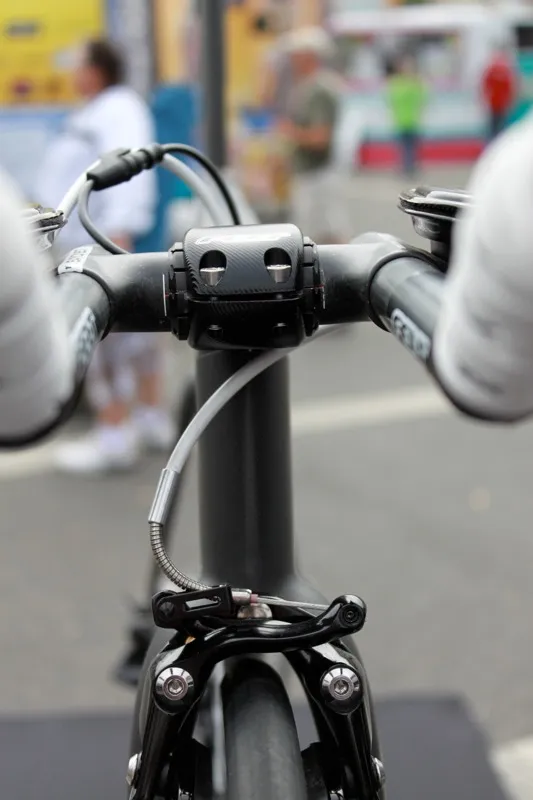
The Felt DA's proprietary V-style brake
Finally, the new DA has an all-new V-style brakeset, which is more aero than conventional calipers, while also offering better cable routing and better brake power and modulation.
The 2011 DA will be available in six sizes — 48cm x 650c; 51, 54, 56, 58, 61cm x 700c — but not until early December at the earliest. The DA's price has not been set, yet, but if only because it will be equipped with the Di2 group the 2011 model will be more than this year's version.
